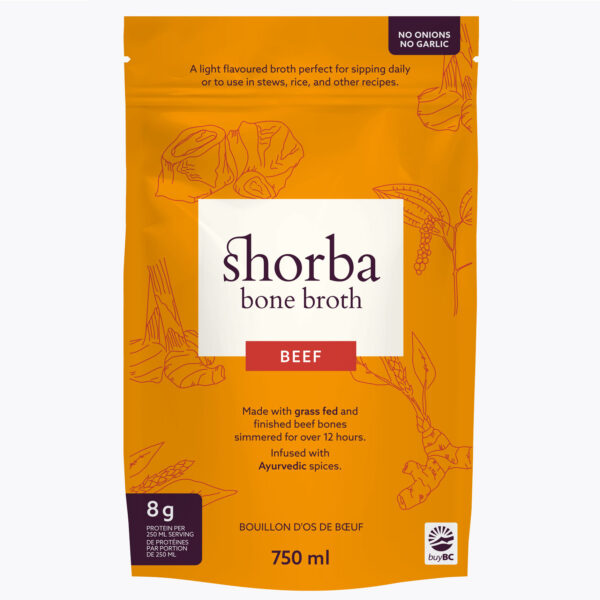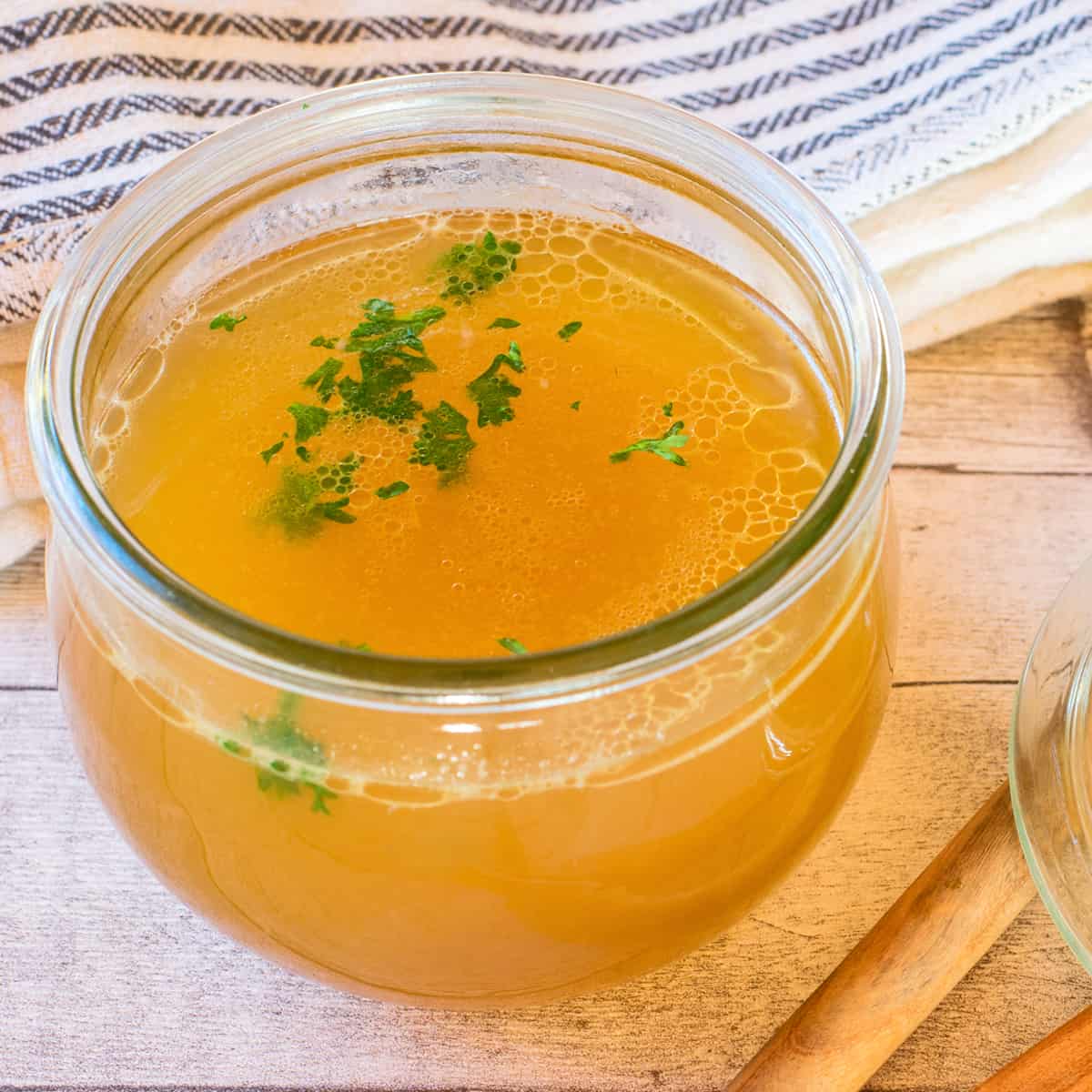The Ultimate Guide to Enjoying and making Organic Bone Broths in your home
Bone brew has actually acquired focus for its many health and wellness advantages and culinary versatility. Crafting natural bone brew at home permits individuals to regulate the top quality of ingredients, making sure a healthy outcome. Comprehending the selection of bones, necessary flavor components, and correct cooking techniques is vital. As the procedure unfolds, one may ask yourself exactly how to raise their brew past the essentials and integrate it into everyday dishes for boosted taste and nutrition.
Comprehending the Health Advantages of Bone Broth
Bone brew has been a staple in various foods for centuries, its health and wellness advantages have actually obtained significant attention in current years. Rich in collagen, amino acids, and minerals, bone brew is usually touted for its prospective to support joint health, enhance gut feature, and enhance skin flexibility. The gelatin acquired from cooked bones may help digestion and help secure the gut lining, potentially relieving problems like leaky gut syndrome.Furthermore, the existence of nutrients such as glucosamine and chondroitin may add to decreased inflammation and discomfort alleviation in joints. Furthermore, bone brew is hydrating and can offer as a nutritious base for soups and stews. Several proponents also claim that it improves the immune system, thanks to its mineral account. In general, the revival of passion in bone broth is linked to its regarded ability to advertise overall well-being and assistance different bodily features.
Selecting the Right Bones for Optimum Flavor and Nutrition
What variables should one take into consideration when selecting bones for broth preparation? The sort of bones utilized greatly affects both taste and nutritional worth. It is vital to select bones that consist of a mix of marrow bones, joint bones, and weighty bones. Marrow bones give abundant flavors and healthy fats, while joint bones contribute collagen, improving the brew's dietary profile.Additionally, sourcing bones from pasture-raised or grass-fed pets guarantees greater top quality and more nutrients, as these animals are typically healthier. The quality of the bones is additionally essential; selecting bones from local butchers or farmers' markets can ensure ideal flavor. Bone dimension matters as well; larger bones launch even more gelatin, causing a richer brew. Ultimately, taking into consideration the sort of animal-- fish, hen, or beef-- can influence the last preference, permitting for flexible broth options customized to individual preferences.
Crucial Active Ingredients for a Delicious Bone Broth

Quality Bone Option
The structure of a tasty bone brew exists in the careful selection of high-quality bones. Sourcing natural, pasture-raised or grass-fed bones is essential, as these choices are more probable to be devoid of dangerous ingredients and provide premium nutrients. Ranges such as beef, lamb, or chicken bones each pass on distinct tastes and health and wellness advantages. Bone kinds, consisting of marrow bones, knuckle bones, and oxtails, add gelatin and collagen, improving the broth's appearance. Picking bones with a mix of meat and connective tissue can additionally include richness and deepness. In addition, picking bones with noticeable marrow assures a nutrient-dense brew, raising the total high quality. Eventually, investing time in quality bone choice lays the groundwork for a nourishing and delicious brew.
Fragrant Taste Enhancers
Picking high-grade bones sets the stage for a healthy and abundant bone broth, but it is the enhancement of fragrant taste enhancers that really elevates the recipe. Ingredients such as onions, garlic, and carrots not just present sweetness but also add depth to the broth. Fresh natural herbs like parsley, bay, and thyme leaves add a great smelling note, while seasonings such as black peppercorns and cloves present warmth and intricacy. In addition, incorporating a splash of apple cider vinegar can help remove minerals from the bones, enhancing the brew. These flavor enhancers develop a harmonious mix, changing a straightforward brew right into a tasty structure for stews, sauces, or soups, making it a versatile component in any kind of cooking collection.
Step-by-Step Overview to Making Bone Brew in your home
Developing bone brew in your home can be a satisfying cooking undertaking that boosts both taste and nourishment in various meals. To begin, one must select premium bones, ideally from grass-fed or organic sources. Roasting the bones at 400 ° F for regarding half an hour can increase the flavor. Next off, transfer the roasted bones to a big pot or slow-moving cooker and cover them with cold water. Adding a sprinkle of vinegar aids essence minerals from the bones.Include fragrant vegetables like onions, carrots, and celery for added depth, in addition to natural herbs and spices as desired. Bring the combination to a boil, then lower to a simmer. It is vital to let the broth simmer for a minimum of 12 hours, though longer is better for maximum richness. Lastly, stress the brew with a fine-mesh filter and store it in closed containers, all set to raise dishes with its nutritious essence.

Tips for Refining Your Bone Broth Simmer
While simmering bone brew, keeping the best temperature and timing is important for attaining a abundant and delicious result. A gentle simmer, ideally in between 190 ° F and 210 ° F, assists extract optimum nutrients and flavors without steaming, which can make the broth cloudy. It is advisable to keep an eye on the pot carefully, changing the warmth as essential to preserve this simmer.Timing is additionally vital; a longer simmer, typically ranging from 12 to two days, enables deeper flavor removal and collagen launch. For hen bones, a 12 to 24-hour simmer is adequate, while beef bones gain from longer cooking times.Additionally, skimming off any foam or pollutants that rise to the surface throughout the first few hours can enhance the broth's clearness and preference. Making certain the pot is covered during simmering helps to keep wetness and intensify the tastes, making for a more enjoyable end item.
Innovative Ways to Make Use Of Bone Broth in Your Cooking
Including bone brew into various dishes boosts both taste and dietary worth. Cooks and home cooks alike locate that utilizing bone broth as a base for stews and soups enhances depth and richness, transforming basic dishes into hearty dishes. It can likewise be used in risottos, where the broth replaces water, allowing the grains to absorb its full-flavored essence.Additionally, bone brew functions as an outstanding cooking liquid for grains like quinoa or rice, instilling them with nutrients and flavor. For an included spin, it can be utilized in braising meats, resulting in tender, delicious outcomes. Even sauces benefit from a sprinkle of bone brew, improving their preference profile.Moreover, bone broth can be incorporated into healthy smoothies for an unanticipated health and wellness increase, providing healthy protein and nutrients without compromising preference. These innovative applications showcase the convenience of bone brew in day-to-day food preparation, making it a very useful kitchen area staple.
Storing and Maintaining Your Self-made Bone Brew
Proper storage and preservation of homemade bone broth is important for keeping its flavor and nutritional benefits. Cold methods and refrigeration ideal methods play an essential duty in expanding the brew's shelf life. Recognizing these approaches can aid assure that the brew continues to be scrumptious and risk-free for future usage.

Freezing Strategies Explained
Freezing strategies are necessary for successfully keeping and preserving self-made bone broth, guaranteeing its rich tastes and nutrients stay undamaged for future usage. To ice up bone broth, it is advisable to let it amazing totally before transferring it to storage space containers. Glass jars, silicone molds, or heavy-duty freezer bags appropriate choices. When utilizing containers, leave room on top for expansion throughout freezing. Portioning the broth right into smaller sized quantities enables very easy thawing and minimizes waste. Label containers with the date and components for Full Article very easy identification. For peak quality, take in the frozen brew within 3 to 6 months - Bone Broth Delivery. Thawing can be done in the refrigerator or by utilizing a microwave, making certain that the brew is heated extensively prior to usage
Refrigeration Best Practices
While numerous concentrate on freezing as a technique of conservation, refrigeration also plays a necessary role in keeping homemade bone brew efficiently. Once cooled down, bone brew should be transferred to impermeable containers, ensuring minimal air direct exposure to stop perishing. It is a good idea to refrigerate broth within 2 hours of food preparation to maintain its quality. Generally, homemade bone broth can be kept in the fridge for as much as five days. Labeling containers with dates can help track freshness. For peak flavor and safety, broth should be reheated to a rolling boil before intake. If longer storage space is required, freezing continues to be an exceptional choice, but Continue proper refrigeration practices assure that bone broth remains delicious and nourishing for temporary use.
Frequently Asked Inquiries
Can I Make Use Of Frozen Bones for Making Bone Broth?
The question of using frozen bones for bone broth arises regularly (Organic Bone Broths). Experts agree that frozen bones can be utilized effectively, yet they must be defrosted prior to food preparation to assure excellent flavor and nutrient removal
How Lengthy Can I Shop Homemade Bone Broth?

Is It Safe to Reheat Bone Brew Several Times?
Reheating bone broth several times can position safety issues - Organic Bone Broths. Each reheating cycle boosts the danger of microbial growth. It is recommended to reheat just once and store any leftovers without delay to ensure safety and top quality
Can I Include Veggies to the Brew for Flavor?
Including vegetables to brew boosts taste and nutritional value. Common selections include carrots, onions, and celery. The vegetables instill their significance into the broth, creating a richer and much more savory end product.
What's the Ideal Means to Defrost Frozen Bone Broth?
To defrost frozen bone brew, one can position it in the refrigerator overnight, use a microwave on reduced warmth, or submerge the secured container in cozy water, making certain also thawing without endangering flavor or nutrients. It is vital to pick bones that consist of a mix of marrow bones, joint bones, and meaningful bones. Marrow bones give rich flavors and healthy and balanced fats, while joint bones contribute collagen, improving the brew's nutritional profile.Additionally, sourcing bones from grass-fed or pasture-raised animals assurances greater top quality and more nutrients, as these pets are normally much healthier. Bone types, including marrow bones, knuckle bones, and oxtails, contribute gelatin and collagen, official statement improving the brew's structure. Choosing top notch bones sets the phase for a abundant and nutritious bone broth, yet it is the addition of aromatic taste boosters that absolutely elevates the meal. Even sauces profit from a sprinkle of bone brew, enhancing their preference profile.Moreover, bone brew can be included right into shakes for an unforeseen health and wellness increase, giving protein and nutrients without compromising preference.